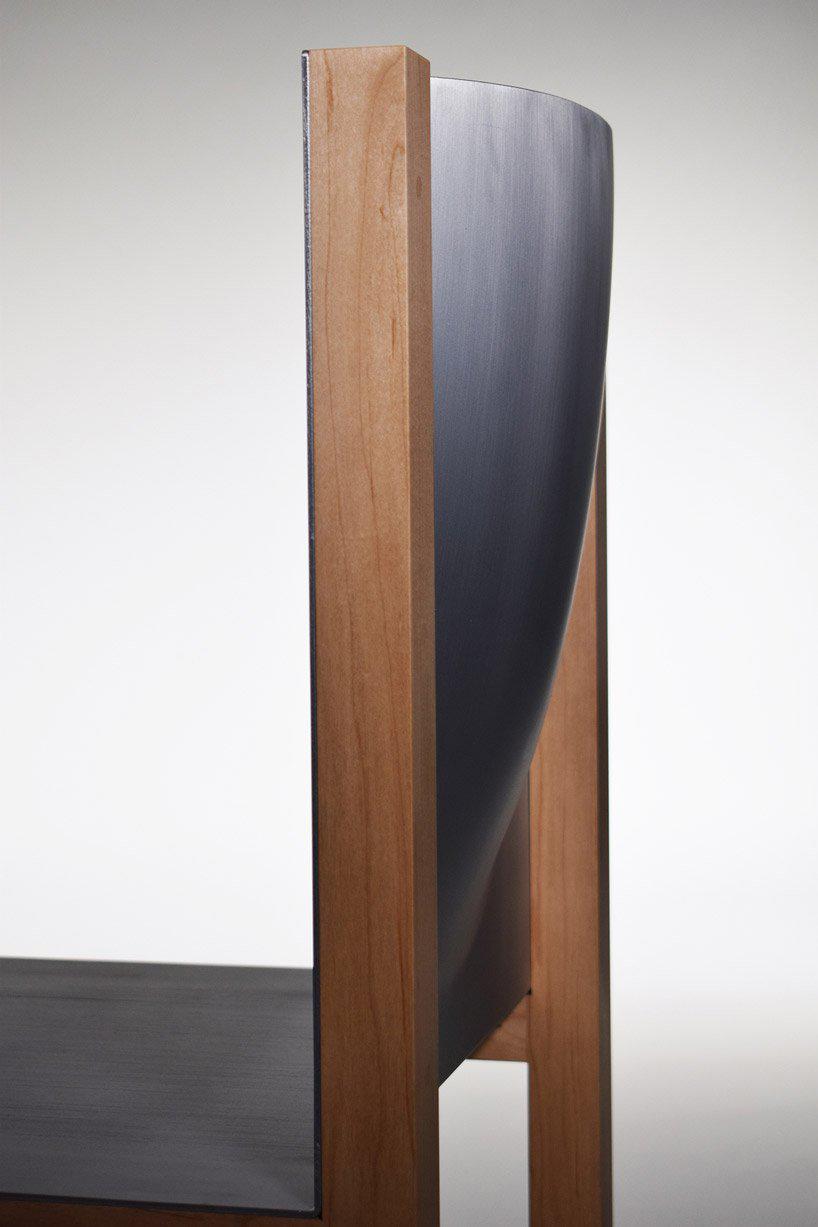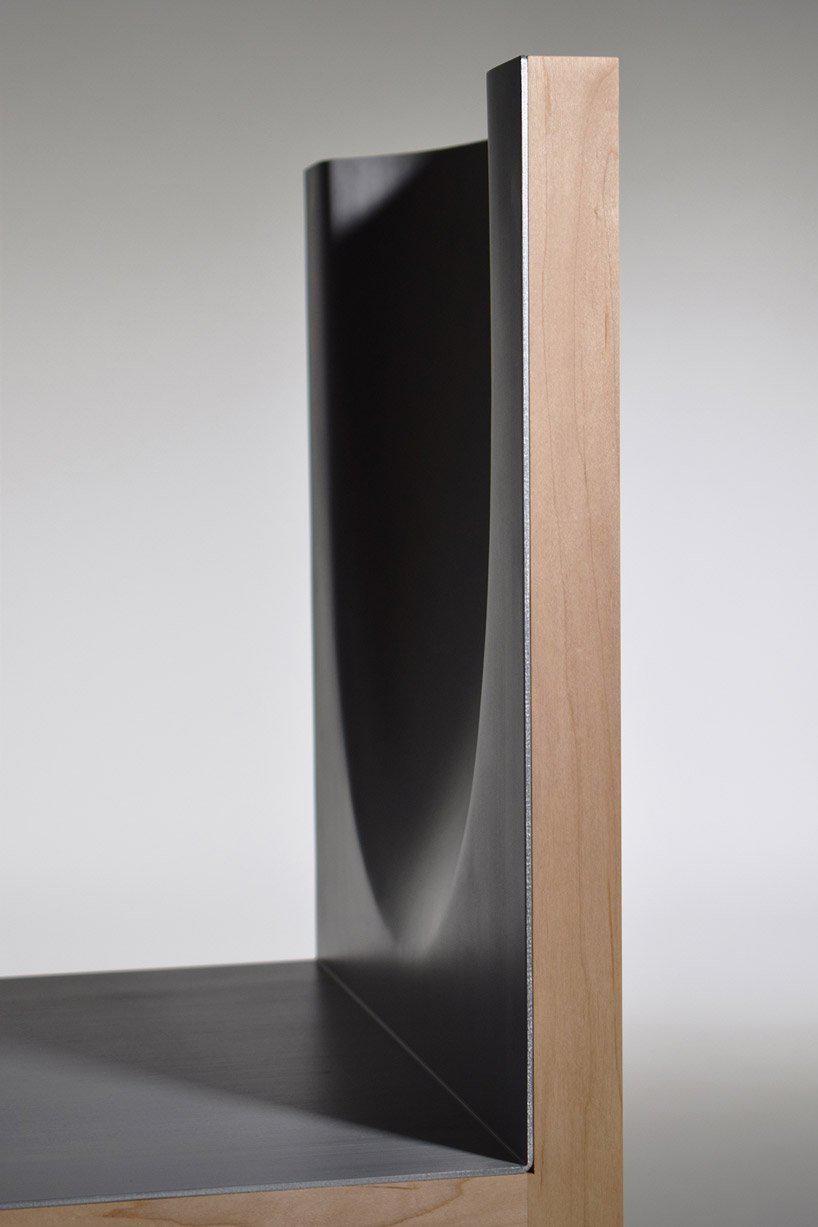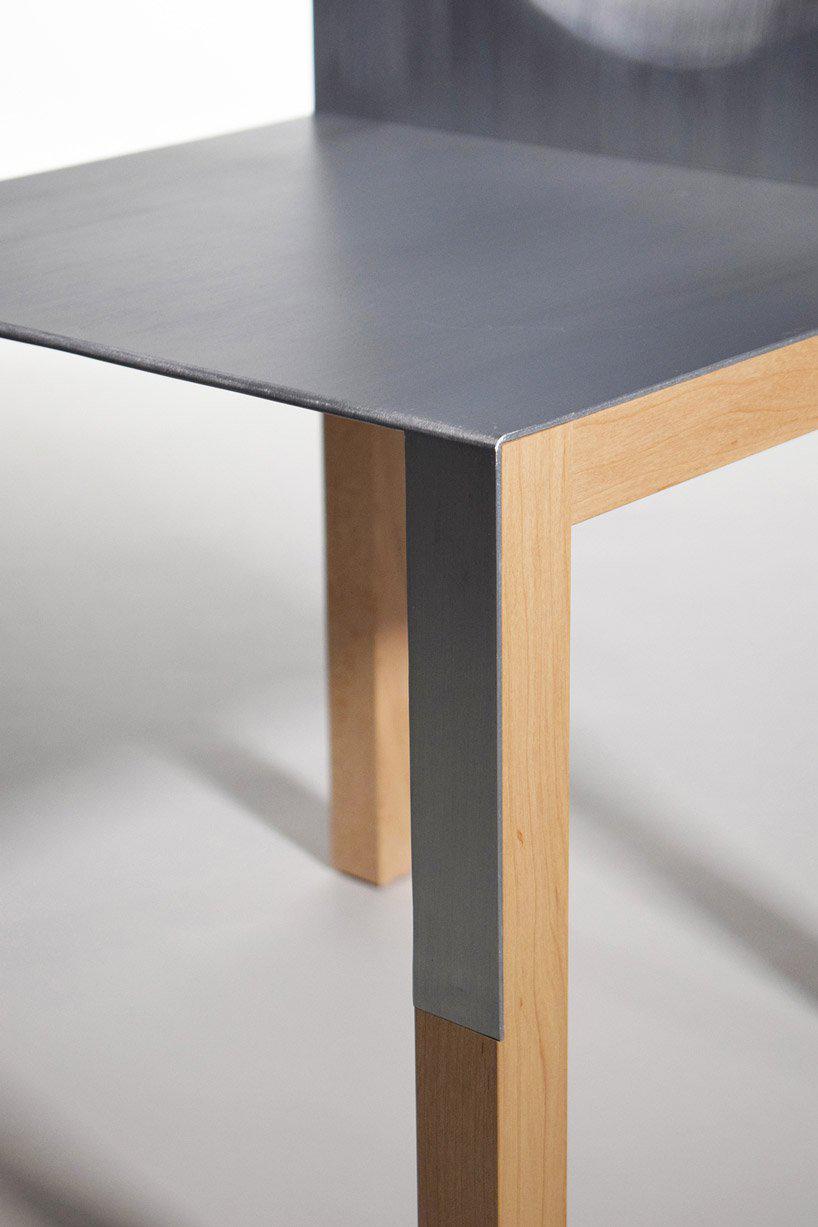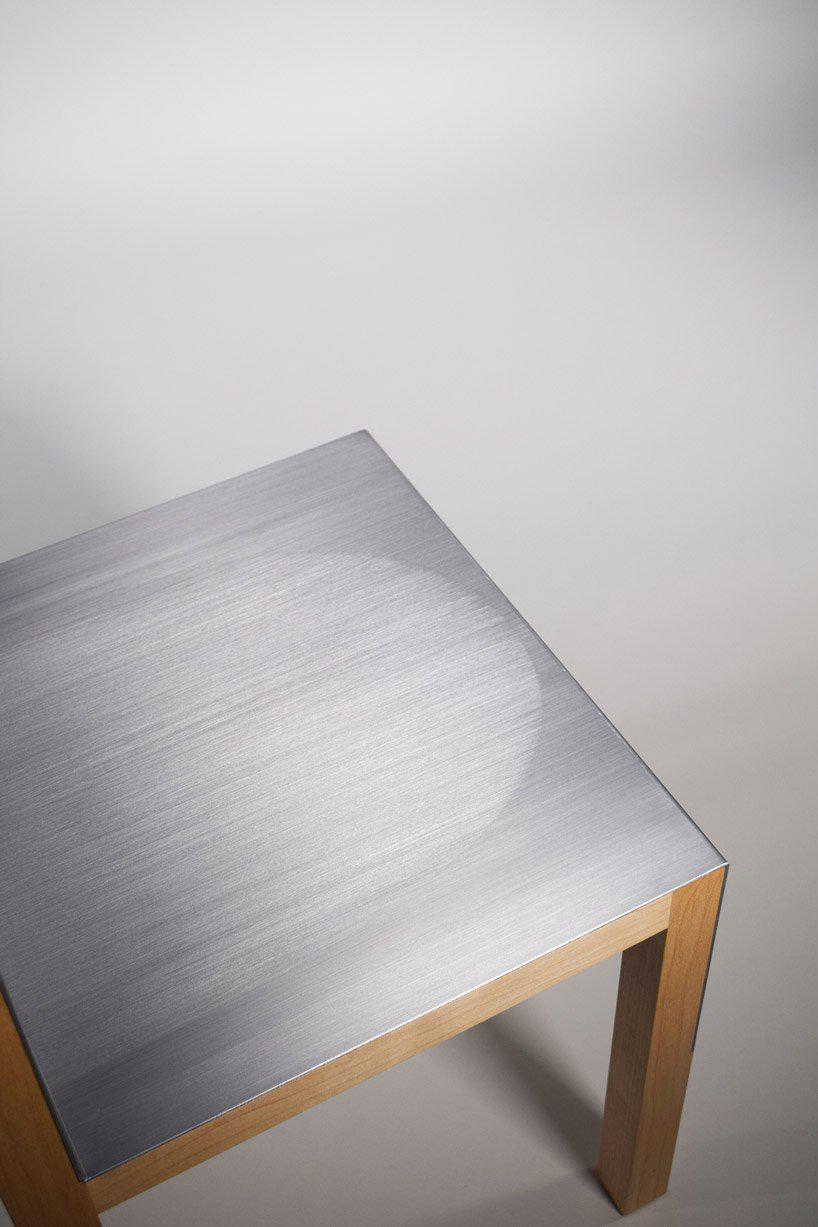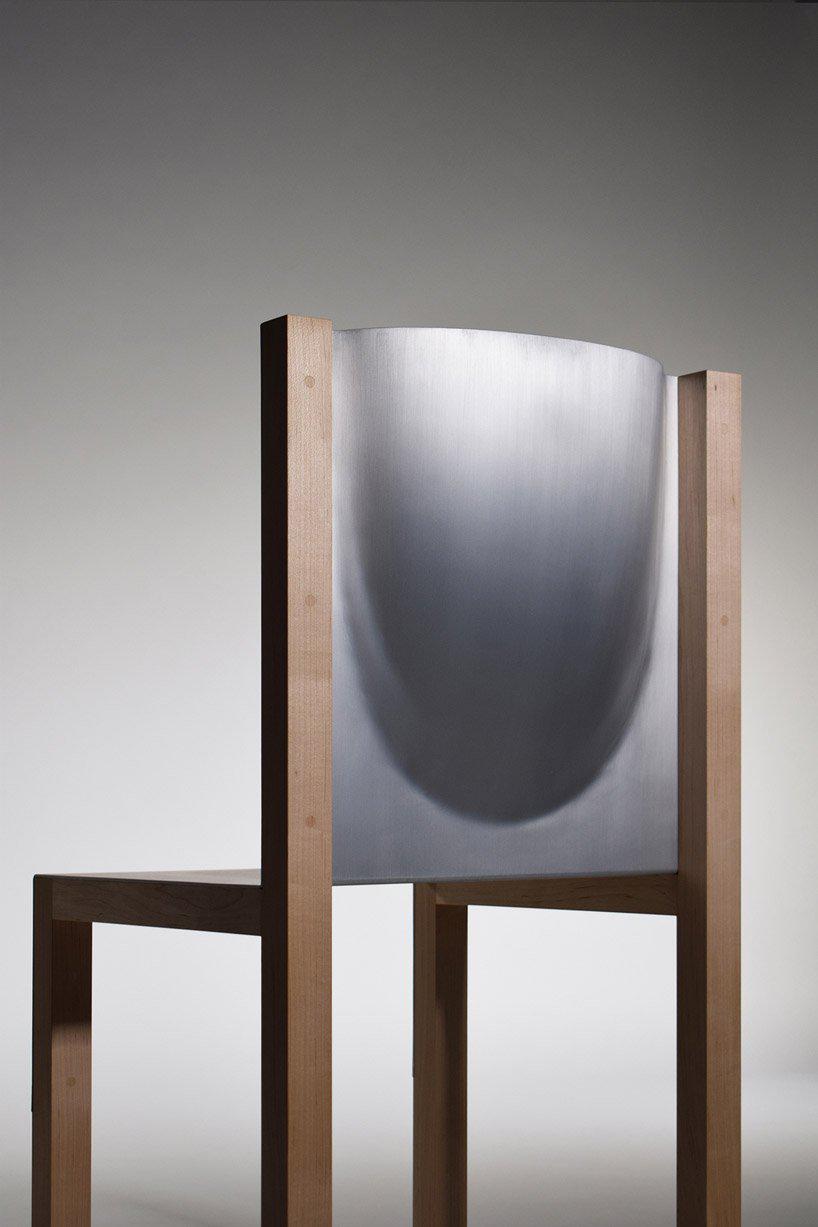toshiki omatsu bends aluminum sheets onto maple timber for latest chair design
designboom_each violin tells a different story. to understand what they are, to notice every hidden detail, you’d need to spend a lot of time studying them slowly — perhaps reading them for as long as the artist spent rendering them. ‘I like to think that my musical instruments can be read as books,’ says leonardo frigo.
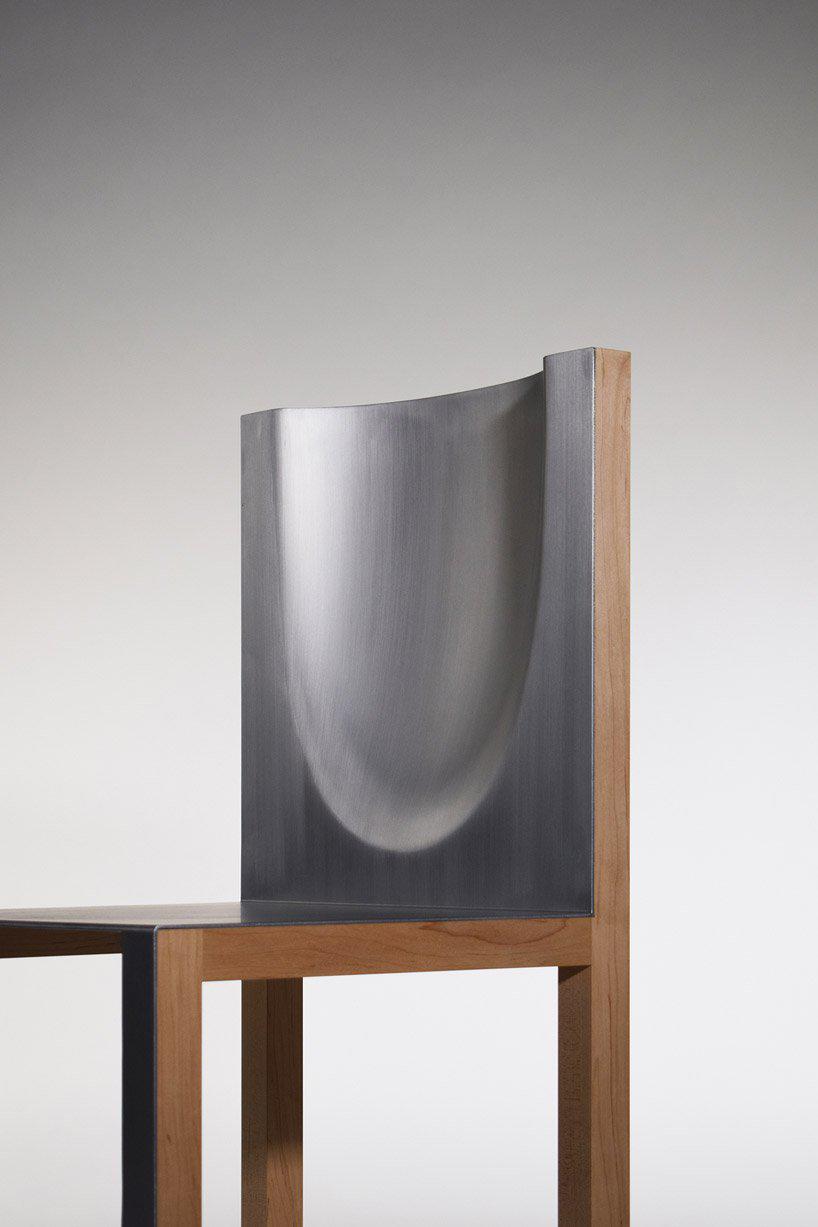
the back plate of the chair is formed at an angle to the sheet surface, as a right-angled plate was considered uncomfortable for users to sit on. the resulting design comes from the question that omatsu posed: ‘what if the back plate is deformed according to one’s leaning on it backward?’ the back plate, the sheet and the partial front legs are made out of a single aluminium sheet with a thickness of 3mm, bended to the form. the partial front legs of the aluminium work not only for the design but also for structural strength, as there are no joints between the chair legs.
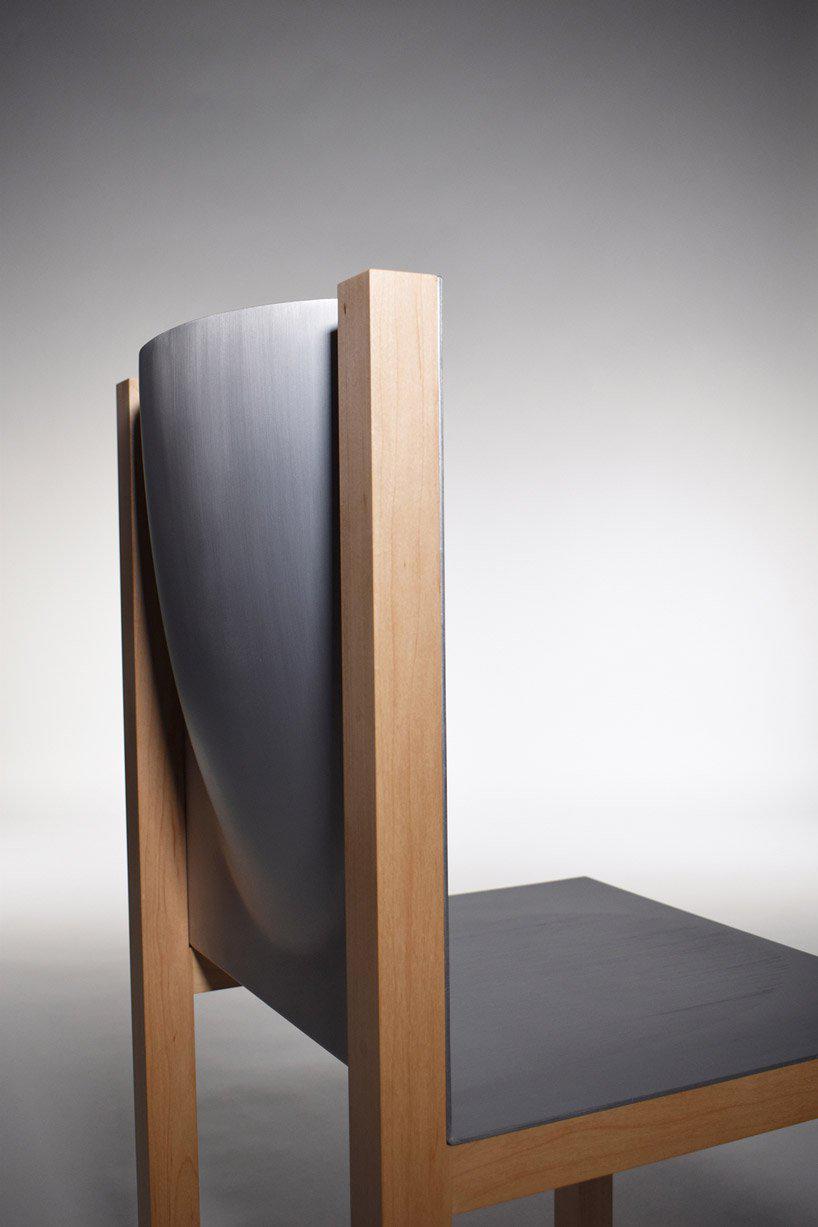
the metal that has used for the seat and back plate of the chair harnesses new technology which is more typically reserved for architectural façades. the process, called ‘incremental forming’, has been developed by the japanese metal expert, kikukawa kogyo, who has worked on projects for renowned architects such as kazuyo sejima and foster+partners. ‘incremental forming’ is a dieless metalworking process that is suitable for small productions of a wide variety of products. advantages of this method include cost and lead time reduction in comparison to conventional metalworking process (spinning or die casting).
